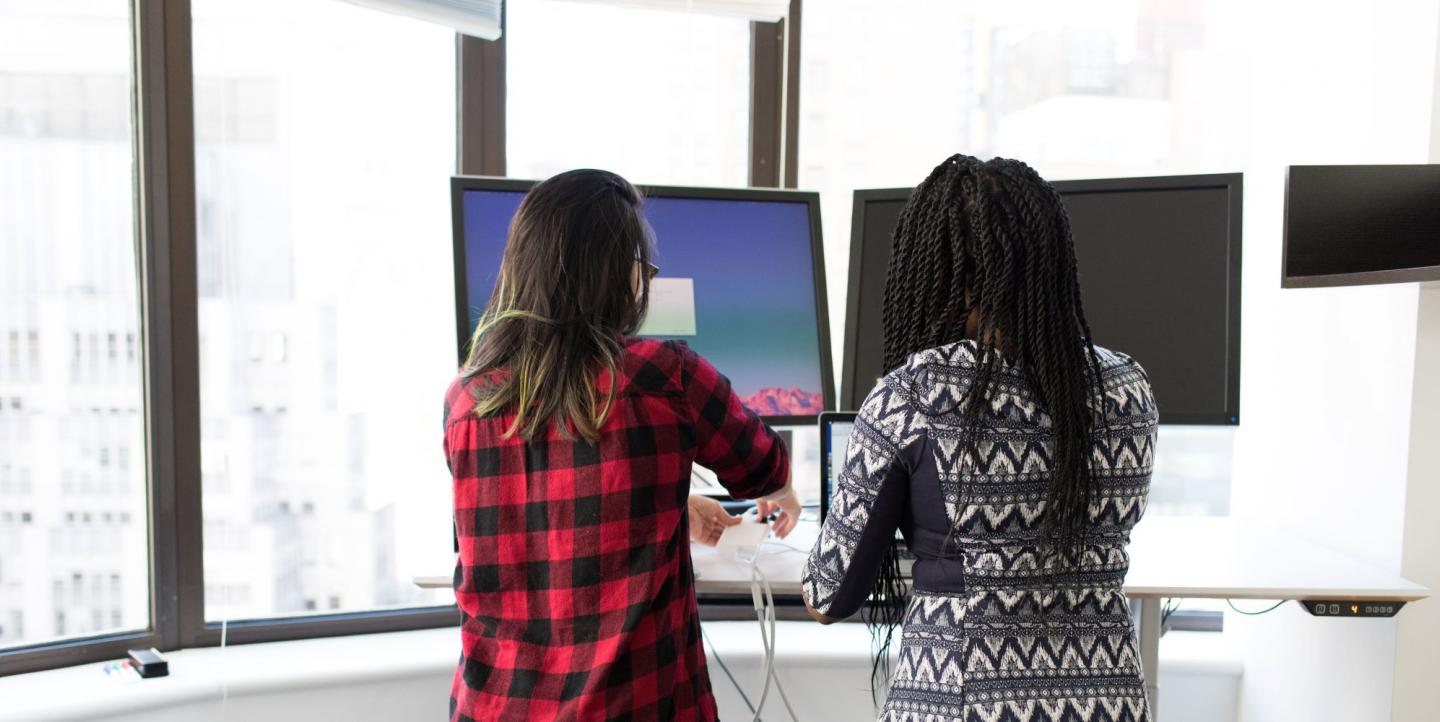While many media organizations around the world may strive to diversify their representation of women, most publications still rely on male sources and subjects. According to a 2020 report by The Global Media Monitoring Project, “women are dramatically under-represented in the news, with just 24% of them serving as news subjects and sources.”
Marginalized groups of women are at even higher risk of under-representation. According to the Women’s Media Center’s 2018 Status of Women of Color in The Media Report, “women of color represent just 7.95% of print newsroom staff in the country, 12.6% of local TV news staff, and 6.2% of local radio staff.”
By choosing to diversify their sources and representation of women, media workers and commissioning editors have the power to shift these numbers over time. This diversity in turn enables more people in the population to see themselves represented, which helps empower a broader spectrum of people. According to the visibility education organization, Seejane.org, “If she can see it, she can be it.”
Increasing the visibility of a diverse spectrum of women helps shift historical stereotypes and misrepresentations in media. Here are some tips and tools to help:
(1) Consider the language you use
Diversifying the representation of women in media requires more than simply adding an “x” to a word. A 2018 BBC article highlighted the debates that arose on social media surrounding the language that some organizations and businesses began to use in an attempt to diversify their representation of women: specifically, using the word “womxn.”
The article highlights some of the questions posed online — for instance, a tweet from user Sam Baxter, who asked, “Who exactly is this meant to include? Trans women call themselves women, non-binary people don't call themselves women at all.”
[Read more: These two women spearheaded gender-sensitive reporting in Namibia]
Making assumptions about inclusive language without consulting sources can lead to misrepresentation and further erasure of marginalized groups. Make it your practice to ask your interview subjects for their pronouns, for example, as I wrote for IJNet last year as part of advice for ethical trans representation in reporting. This applies even when you may not assume a person is trans.
If reporters make gender assumptions without checking in with their interview subjects about how they identify, they could misgender people. For example, historically, reporters who have framed gender rights movements as women's rights movements, could have erased and misgendered the gender diverse population within the assumed group of women.
While some media organizations use the term “women” loosely to represent a diverse spectrum of identities, it’s still always best to check with sources on how they’d like to be represented, and whether they’d like to be included in the group you’re reporting on.
(2) Think of marginality on an intersectional scale
In 1989, Professor Kimberlé Crenshaw coined the term "intersectionality" to describe the overlapping of oppression and privileges in people’s identities. In a 2018 interview for the National Association of Independent Schools, Crenshaw explained, “African American girls are six times more likely to be suspended than white girls. That's probably a race and a gender problem. It's not just a race problem and it’s not just a gender problem.”
The theory expands on numerous intersections of marginality, including gender, sexuality, race, class, disability, skin color and more. Media makers could use intersectionality as a lens to diversify the representation of women by reaching out to sources who are on the margins of womanhood.
When they are represented in media, the type of representation often differs dramatically, too. Reporting on lower-income trans women of color, for example, often relates to high levels of violence against them, including reporting on murder.
On the flip side, Caitlyn Jenner — an affluent white trans woman — has received media attention that celebrated her existence and transition, such as this 2015 Vanity Fair cover. While the feature created an opportunity for more transgender awareness in the media, her representation stirred mixed reactions among the transgender community as people pointed out her race and class privilege, noting that the average trans person of color would not be likely to receive the same type of coverage.
[Read more: Reporters and sources can improve women experts' representation in media. Here's how.]
(3) Use the power of the internet to diversify your sources
To address a notoriously male-dominated global media, organizations have compiled online databases to help media workers diversify their reporting on women.
Women’s Media Center provides a database called SheSource, which features a wide array of women experts across professional fields. It includes a journalist sign-up for media workers who would like to stay in contact with a diversity of sources. Other organizations such as Informed Opinions provide databases that also seek to achieve gender balance in media. The databases include a vast range of experts covering a diverse spectrum of womanhood, from lawyers, to CEOs and professors.
For media workers looking for sources in Africa, Quote This Woman has a database of women experts that can help. For journalists searching for women from diverse backgrounds on the ground, social media can provide a network. By following hashtags, media workers can gauge who feels comfortable with particular identity labels. They can then reach out to connect, while respecting boundaries if there is no response.
Media workers are tasked not only with the responsibility of shifting media bias, but educating themselves on ethical representation while reporting on marginalized groups. Being more inclusive when identifying and selecting sources can play a big role in furthering representation equality.
Nazlee Arbee is a multimedia artist and journalist based in Cape Town, South Africa.
Photo by Christina @ wocintechchat.com on Unsplash.


